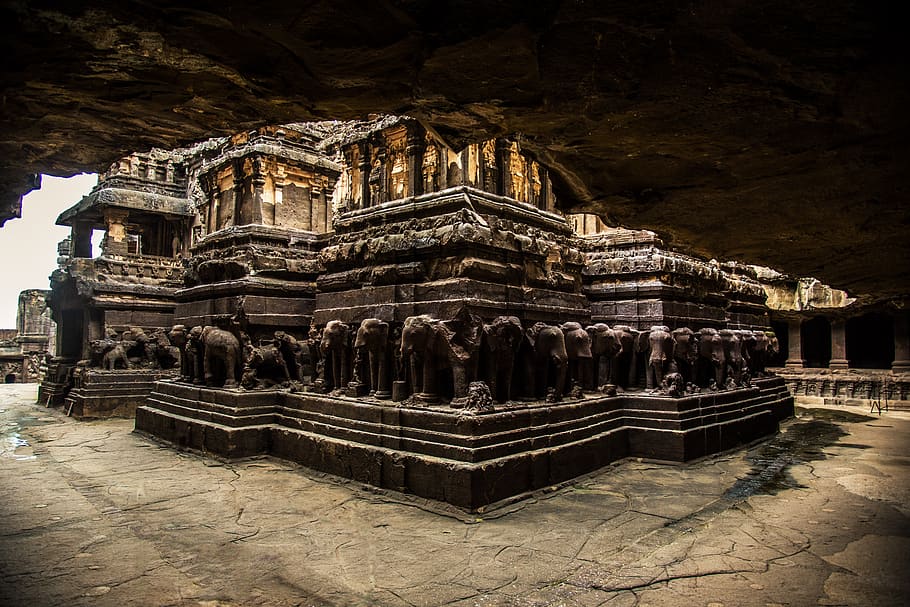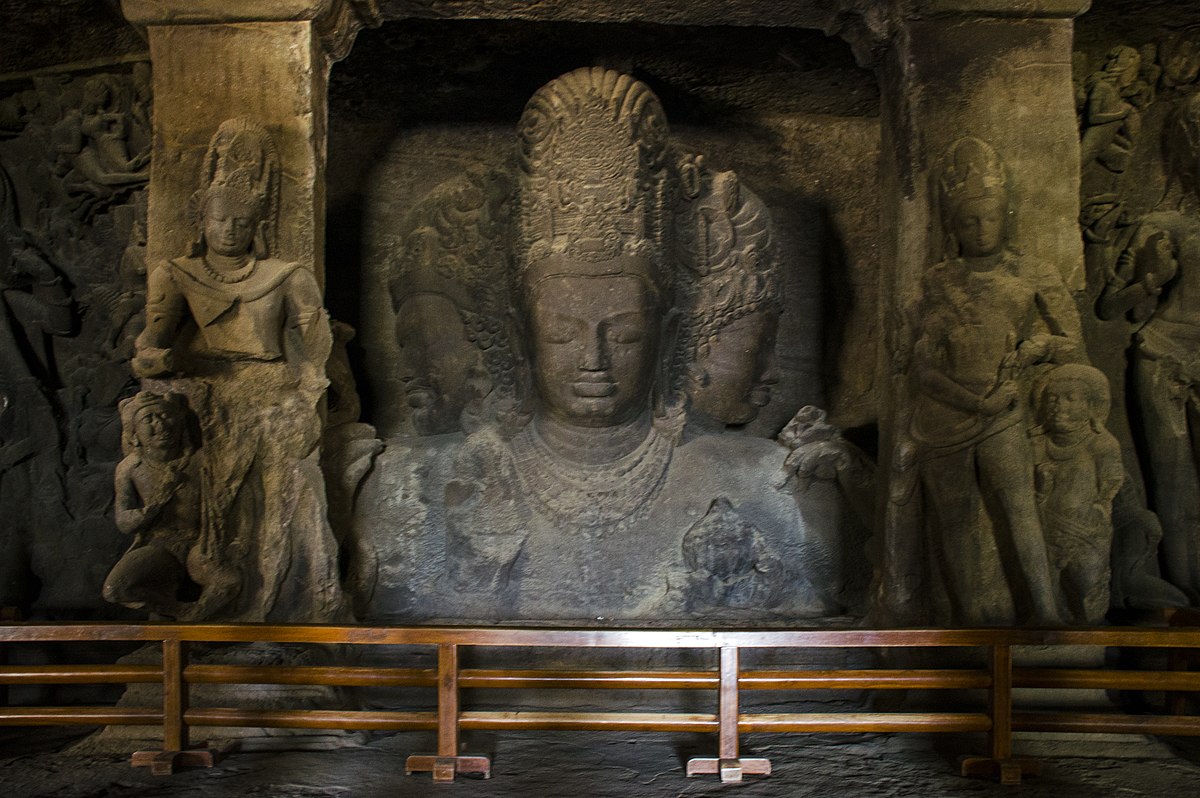The Rashtrakuta Empire was a royal dynasty ruling large parts of the Indian Subcontinent between the sixth and the 10th centuries.
How do we know that Rashtrakutas are the Patrons of art and architecture?
During the region of Rashtrakutas mathematics was developed a lot. The famous Kailash temple at Ellora and the rock cut-cave at Elephanta were carved during their region. By this, we can say that Rashtrakuta Empire is a great patron of art and architecture.
Art and Architecture:

Rahtrakuta Empire contributes much to the art and architecture heritage of Deccan. Adam Hardy, the art historian has categorized their building activity in three schools: Ellora, Badami, Aihole, and Pattadakal at Serval Gulbarga. The Rashtrakutas contribution reflected in the magnificent rock-cut cave temples at Ellora and Elephanta, located in Maharashtra. The Ellora cave is a world heritage site by UNESCO. The Rashtrakuta Empire built all the monuments at Ellora sites. The site was originally part of a complex of 34 caves that consist of 12 Buddhist (1-12), 17 Hindu (cave 13-29), and 5 Jain (cave 30-34), in which they constructed and renovated. The most extensive and magnificent of the Rashtrakuta works at Ellora is their creation of the monolithic Kailasanath temple by King Krishna 1, it is considered one of the most remarkable monolithic structures in the world because of its size, architecture and sculptural treatment, and “the climax of the rock-cut phase of Indian architecture. The Kailash temple is dedicated to Bhagwan Shiva. Perhaps, it was meant to be a lookalike of mount Kailash, the mystical abode of Shiva. The base of the temple hall features senses from Mahabharata and Ramayana. Some famous sculptures are “Shiva the ascetic”, “Shiva the dancer”(Nataraja), “Shiva being warned by Parvati about the demon Ravana” and “River goddess”, and a notable sculpture is “Ravana attempting to lift Mount Kailasa”, while the ceiling has paintings. The architectural style used is Karnata Dravida according to Adam Hardy.
Other famous rock-cut temples in the Maharashtra region are the Dhumer Lena and Dashvatara cave temples in Ellora (famous for their sculptures of Vishnu and Shivaleela) and the Jogeshvari temple near Mumbai.
Some scholars claimed architecture at Elephanta constructed by the Kalachuri dynasty and by colonial-era historians suggested that the caves were built by the Rahtrakuta empire, a theory primarily based on some similarities with the Ellora Caves but this theory has been discredited by later finding. The cave temple is dedicated to Lord Shiva, and it was made in the 8th century by the Rashtrakuta empire between A.D 757-973. It is one of the famous historical sites and also the world’s heritage site by UNESCO, and It is a collection of seven caves out of which most important is: “the Mahesa murti cave”. There are sculptured compartments in Elephanta cave with outstanding images of Ardhanarisvara, Kalyana-Sundara Shiva, Ravana lifting mount Kailasa, Andhakari-Murti (slaying of Andhaka demon) and Nataraja Shiva, and the gigantic figures of ‘Dvarapalas’ are very impressive, and the famous sculptures at Elephanta include Ardhanarishvara (Lord who is half women)is a composite male-female figure of Lord Shiva together and Trimurti a three-faced bust of Lord Shiva, is considered one of the finest pieces of sculpture in India, also known as Sadashvia and Maheshmurti. It represents the Hindu deity Panchamukha Shiva.

In Karnataka, their most famous temples are the Kashivishvanatha temple and the Jain Narayana temple at Pattadakal, a UNESCO World Heritage site Jain Narayana Temple is the last temple built in the group of monuments is Jain temple, locally known as Jain Narayana temple. The Jain temple is only dedicated to a single Jain, which was likely built in the 9th century during the region of King Krishna 2 ruler from Rashtrakuta empire. Its style is patterned on the lines of the Kailasanatha temple Kanchipuram.
Other well-known temples are:
Parameshwara temple at Konnur, Brahmadeva temple at Savadi, the Settavva, Kontigudi II, Jadaragudi, and Ambigeragudi temples at Aihole, Mallikarjuna temple at Ron, Andhakeshwara temple at Huli (Hooli), Someshwara temple at Sogal, Jain temples at Lokapura, Navalinga temple at Kuknur, Kumaraswamy temple at Sandur, Numerous temples at Shirival in Gulbarga, and Trikuteshwara temple at Gadag which was later expanded by Kalyani Chalukyas.
All images belong to their respective owners.

